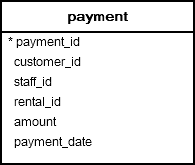PostgreSQL BETWEEN
Summary: in this tutorial, you will learn how to use the PostgreSQL BETWEEN operator to check if a value falls in a particular range of values.
Introduction to the PostgreSQL BETWEEN operator
The BETWEEN operator allows you to check if a value falls within a range of values.
The basic syntax of the BETWEEN operator is as follows:
value BETWEEN low AND high;If the value is greater than or equal to the low value and less than or equal to the high value, the BETWEEN operator returns true; otherwise, it returns false.
You can rewrite the BETWEEN operator by using the greater than or equal ( >=) and less than or equal to ( <=) operators and the logical AND operator:
value >= low AND value <= highIf you want to check if a value is outside a specific range, you can use the NOT BETWEEN operator as follows:
value NOT BETWEEN low AND highThe following expression is equivalent to the expression that uses the NOT BETWEEN operators:
value < low OR value > highIn practice, you often use the BETWEENoperator in the WHERE clause of the SELECT, INSERT, UPDATE, and DELETE statements.
PostgreSQL BETWEEN operator examples
Let’s take a look at the paymenttable in the sample database.

1) Using the PostgreSQL BETWEEN operator with numbers
The following query uses the BETWEEN operator to retrieve payments with payment_id is between 17503 and 17505:
SELECT
payment_id,
amount
FROM
payment
WHERE
payment_id BETWEEN 17503 AND 17505
ORDER BY
payment_id;Output:
payment_id | amount
------------+--------
17503 | 7.99
17504 | 1.99
17505 | 7.99
(3 rows)2) Using the PostgreSQL NOT BETWEEN example
The following example uses the NOT BETWEEN operator to find payments with the payment_id not between 17503 and 17505:
SELECT
payment_id,
amount
FROM
payment
WHERE
payment_id NOT BETWEEN 17503 AND 17505
ORDER BY
payment_id;Output:
payment_id | amount
------------+--------
17506 | 2.99
17507 | 7.99
17508 | 5.99
17509 | 5.99
17510 | 5.99
...3) Using the PostgreSQL BETWEEN with a date range
If you want to check a value against a date range, you use the literal date in ISO 8601 format, which is YYYY-MM-DD.
The following example uses the BETWEEN operator to find payments whose payment dates are between 2007-02-15 and 2007-02-20 and amount more than 10:
SELECT
payment_id,
amount,
payment_date
FROM
payment
WHERE
payment_date BETWEEN '2007-02-15' AND '2007-02-20'
AND amount > 10
ORDER BY
payment_date;Output:
customer_id | payment_id | amount | payment_date
-------------+------------+--------+----------------------------
33 | 18640 | 10.99 | 2007-02-15 08:14:59.996577
544 | 18272 | 10.99 | 2007-02-15 16:59:12.996577
516 | 18175 | 10.99 | 2007-02-16 13:20:28.996577
572 | 18367 | 10.99 | 2007-02-17 02:33:38.996577
260 | 19481 | 10.99 | 2007-02-17 16:37:30.996577
477 | 18035 | 10.99 | 2007-02-18 07:01:49.996577
221 | 19336 | 10.99 | 2007-02-19 09:18:28.996577
(7 rows)Summary
- Use the
BETWEENoperator to check if a value falls within a particular range. - Use the
NOT BETWEENoperator to negate theBETWEENoperator.